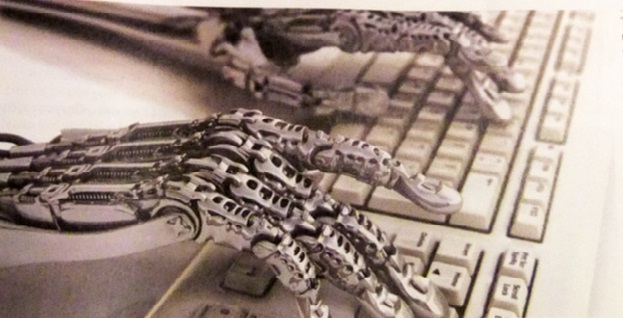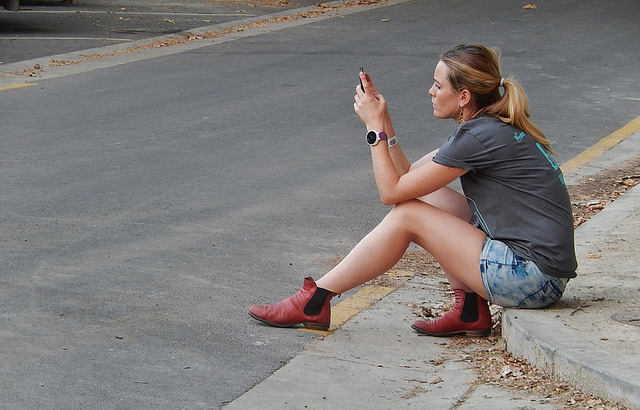Opinions
The Startup Velocity Question: What Hinders Acceleration in VC Funded Companies?

I have been running 1Mby1M since 2010. I find myself saying to entrepreneurs ad nauseam that VCs want to invest in startups that can go from zero to $100 million in revenue in 5 to 7 years.
Startups that do not have what it takes to achieve velocity should not be venture funded.
Experienced VCs, over time, have developed heuristics to gauge what constitutes a high growth venture investment thesis.
>>>A Startup Idea for Unique Artisanal Fabric-based Products
In 1M/1M, we have a wonderful company from Ahmedabad, India, the capital of the Indian state of Gujarat. The company is called The Creative Artisans, and it specializes in artisanal fabrics. Gujarat, for the uninitiated, is a region of India known for its textile industry.
Creative Artisans supplies custom fabrics to major fashion houses like Ralph Lauren, Eileen Fisher, etc. and has already crossed the $1M revenue threshold. They have artisans working with many different techniques – Indigo, Ikat, block prints, Tie n’ Dye, Khadi (Yarn and fabric crafted by hand) embroideries, etc.
In working with them, however, I also see a wonderful opportunity for apparel, accessories, and home furnishing designers to develop products and build small/medium e-commerce businesses using artisanal fabrics.
>>>
Featured Videos
Can 1M/1M Help Me Raise Money?
How Does 1M/1M Democratize Entrepreneurship Education?
How Does 1M/1M Democratize Management Consulting?
When Is The Right Time To Join 1M/1M?
Can 1M/1M Help Me With Business Development?
Can 1M/1M Help Me With Market Sizing?
Can 1M/1M Help Me Validate My Product?
Will I Have Private 1-on-1 Sessions In 1M/1M?
How Does 1M/1M Help Entrepreneurs Connect With Silicon Valley?
Mentoring or Consulting?
Why Does 1M/1M Charge $1000 a Year?
Why Does 1M/1M Partner With Local Organizations?
Why Don\’t Mentoring Networks Work?
Why Is It Important To Study With 1M/1M Now?
Dan Stewart Story
Vikrant Mathur Story
5 Thought Leaders in Artificial Intelligence
After publishing my recent article, Must-read Articles on Artificial Intelligence, in which I’ve shared my thoughts and concerns about AI, some have asked for more.
Here are my in-depth interviews with five (actually six) thought leaders who are deeply engaged in artificial intelligence development today that I hope will provide a good overall perspective on where and how AI is being applied today, where AI stands in 2016:
- Or Shani, CEO of Adgorithms. Over time, the entire profession of media buying will be obliterated. Algorithms will do all the work. This is one of the sectors most vulnerable to be entirely automated by AI. Or Shani speaks on the theme and provides a great example of what is already happening.
- Andreas Wieweg, CTO and Andy Peart, CMO of Artificial Solutions. Have you used Siri? Have you used Amazon’s Echo? Have you used any other natural language activated by personal assistant? The world of AI is rife with speculations on where this field is going, and this discussion is a wonderful expose on that topic.
Must-read Posts on Artificial Intelligence
My deep concerns over the impact that Artificial Intelligence, Machine Learning, Robotics, and over-automation will eventually have on society have led me to write several thought-provoking articles to help raise awareness while course correction is still possible.
Whichever way the future unfolds, we do have some time in hand. The kind of mass scale automation that may eventually come about is still 50-100 years away, most likely. Still, there is a very high probability that massive degrees of automation WILL eventually come about. Huge displacement of workers WILL take place due to such automation. Given that eventuality, are we facing Utopia or Dystopia? My prediction, unfortunately, is the latter.
>>>
Must-Read Posts on Corporate Innovation
Anyone involved in a corporate innovation program soon learns that it is quite complex to manage the nuances of such programs and get them to work right.
Last year I spent half a day with approximately 40 Fortune 500 Chief Innovation Officers at Xerox PARC, and discussed our experience with corporate innovation methodology through the1M/1M Incubator In A Box program. A few months later, Jim Euchner, the CIO of Goodyear, interviewed me for the Research-Technology Management journal.
>>>
A Startup Idea for Indian SMB Channels
If you are trying to sell B-to-B software to Indian SMBs, you know that it’s a very big market, and by and large, inaccessible.
There are hardly any mature channels through which to cater to this audience of customers profitably.
>>>
Startup Ideas Combining Italian Design and Indian Craftsmanship in Fashion
If you’ve read Vision India 2020, you may recall a project called Urja. In it, I explored the idea of creating a fusion brand with Italian designers working with Indian artisans and craftsmen specializing in different domains such as Chikkan from Lucknow, Tasar from Bengal, etc. This project, like all the Vision India 2020 projects, was designed to be a very large company, and hence the distribution and financing strategy was accordingly different.
Now I have a different lens on. I am thinking of small-scale ideas that will stimulate a thousand new brands, each focused on a specific craft, a specific style of customer, and sell through channels that are easily accessible and not very expensive.
>>>
Entrepreneurs: What You Need to do to Get PR Coverage Without Funding
The entrepreneurship media has a very annoying habit: they tend to only cover funding news and write about funded companies.
This puts all those companies that do not have any funding at a grave disadvantage. In many cases, entrepreneurs will need to work their way to become fundable by climbing the rungs of the credibility radar.
And during that phase, they need to get the word out there that they exist, they offer something of value, and customers ought to look at them.
Very few business writers ask the question: What is your revenue?
Most ask the question: How much funding have you raised? From whom?
>>>
How Technology is Ruining Romance
Technology makes a lot of things possible that are detrimental to society. One of them is Tinder and other hook up apps.
These days, you can swipe for love.
These days, you can swipe for sex.
And people are doing it.
There’s a problem, though.
>>>
Startup Idea: E-Commerce Focused on High-end Ceramics
As with other Vision India 2020 ideas, Gagori was also originally designed as a billion dollar project. It focused on using Japanese and Italian designers working with Indian potters and ceramicists to create high-end dinner sets, vases, platters, pots, etc. You can read it here.
Once again, there is a comparable opportunity with some of the same ideas, but without the need to scale at exponential pace. You could build a set of e-commerce businesses that specifically focus on high-end ceramics.
>>>
Future of Artificial Intelligence: The Triumph of Communism?
I have written several pieces already on my deep concerns about the kind of society we’re moving towards in the next 30-50 years as technology-induced changes sweep through society, rendering hundreds of millions of people unemployable.
Future of Work: Utopia or Dystopia?
Future of Artificial Intelligence: Brexit, Trump and Other Calamities
Artificial Intelligence: Just Because We Can, Does It Mean That We Should?
Future of Artificial Intelligence: All Play, No Work Society
Future of Artificial Intelligence: Demonetization
It seems to me that the end game in this thought experiment is the triumph of communism. Let me explain.
>>>










